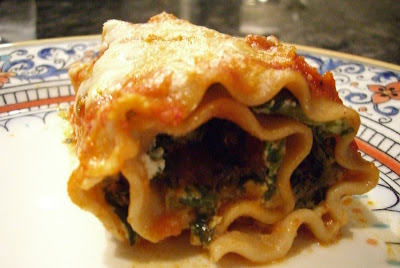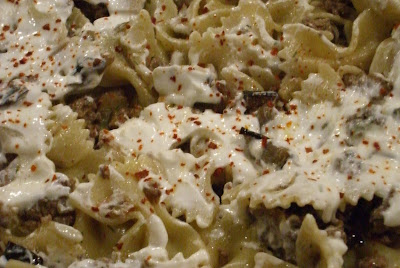Today I am both sad and disgusted at the news in the food world. I am truly surprised and saddened by Conde Nast's announcement that it will be closing Gourmet magazine (not to mentioned pissed because I just renewed my subscription). This is a loss to the circle of us who have a love of reading about food and cooking. Gourmet has been the pinnacle of great food writing and photography, introducing us to new ingredients, new places and cuisines and new ways of looking at food and thinking about food. I have had a subscription since 1990, give or take a year or two in the '90s while I was busy having babies. I have always looked forward to receiving that glossy monthly treat, never utilitarian, always stimulating, even where the recipes were way beyond my tolerance for detail. While I also receive Bon Appetit (another Conde Nast publication) each month, and do enjoy it as well, it just can't compete with the quality of the writers, photographers and food editors found at Gourmet. What could Conde Nast be thinking? Could the ad revenue of the two magazines be so far different?
And then there's the front page of Sunday's
New York Times. Do not read further if you either have 1) a sensitive stomach, or 2) no desire to ever stop purchasing ground beef from commercial manufacturers no matter how absolutely disgusting the latest news about E. coli contamination is.
Like Upton Sinclair in
The Jungle, and Eric Schlosser in
Fast Food Nation before him, Michael Moss exposes the darker side of ground beef. While none of what he reports is actually a surprise to me (I gave up commercial ground beef after
Fast Food Nation and have tried to move completely away from feedlot raised meat since reading Michael Pollan), Moss pulls no punches in exposing egregious and inexcusable lapses by both the industry and the federal government agency charged with monitoring it.
If you're interested in reading the article and haven't already, here's the link:
http://www.nytimes.com/2009/10/04/health/04meat.html. After tracing one particular burger that sickened Stephanie Smith during the gound beef E. coli outbreak two years ago, and through interviews and government and corporate documents, Moss concluded that "eating beef is still a gamble. Neither the system meant to make the meat safe, nor the meat itself, is what consumers have been led to believe."
If you read the article, you will see that the so-called "burger" that caused this woman (Moss does note that her reaction was extreme) to become paralyzed from the waist down, was, as my favorite daughter would say "so wrong on so many levels." Here are the highlights. As I said above, if you have a sensitive stomach, just stop reading now and join me for my next post.
1. Feedlot cattle are kept in small penned areas with barely enough room to move. They defecate where they live so to speak and their hides are often coated with fecal matter. Though there are supposed to be procedures in place to ensure that the hides are cleaned before the meat can be contaminated, there are many slip ups and no one is inspecting each carcass let alone each piece of trimming. Last year, workers at Greater Omaha (one of Cargill's suppliers) sued the company alleging that "they were not paid for the time they need to clean contaminants off their knives and other gear before and after their shifts." Guess they're not paid to clean their equipment between contaminated carcasses either...
2. One package of commercially ground beef or burgers can come from multiple sources. The burger that sickened Ms. Smith was composed of products from four different sources in three different states and Uruguay.
3. I use the word products in #2, because it's just not clear to me how this burger could even be called meat. Moss describes the actual contents of this burger, from a package made by Cargill, labelled "American Chef's Selection Angus Beef Patties," which actually almost sounds upscale. In this "burger" was a mix of slaughterhouse trimmings (some of which was fifty percent beef and fifty percent fat) and a "mash-like product derived from scraps that were ground together in a fourth state. One of the sources is a company that "processes fatty trimmings and treats them with ammonia to kill bacteria" producing what it terms "fine lean textured beef." Cargill combines these products from different suppliers to arrive at the fat content it is shooting for - in this case, about 26.6 percent fat. Why not use one piece of meat? It would cost Cargill thirty cents more per pound. Moss reports that most grocery store ground beef is blended in this way. The USDA regulations allow even meat labelled ground sirloin to be made from trimmings.
4. The low grade bits and scraps are more likely have come from parts of the cow that have had contact with fecal matter.
5. Cargill does not test meat supplied to it for E. coli bacteria, but relies on its suppliers to check.
6. Many slaughterhouses will not sell to grinders who check the meat for E. coli. Unfortunately, the slaghterhouses are the source of the problem, according to a senior policy analyst with the consumer group Food and Water Watch.
7. Just weeks before Ms. Smith's burger was made, USDA inspectors repeatedly found that Cargill was violating its own safety procedures for handling ground beef. In that very plant, inspectors found "large amounts of patties on the floor," grinders "gnarly with old bits of meat," and one worker who commonly dumped inedible meat on the floor near the production line. However, the USDA inspectors did not fine or sanction Cargill.
8. Though Cargill does check the product for E. coli once it's ground, because its meat comes from so many different suppliers, even if a burger tests positive for E. coli, the company is unable to identify which supplier provided the product that went into it. Just a few weeks before making the burger that sickened Ms. Smith, Cargill found some E.coli in a finished hamburger, and as it couldn't identify the supplier, decided to wait to see if there was a pattern of contamination before doing anything. (**one bright spot in the article - Since 1998 when someone was sickened by its meat, Costco checks all trimmings before grinding. Tyson will not supply them.)
9. As a result of the outbreak, Cargill has agreed to increase scrutiny of its suppliers and will increase testing of finished ground beef, but will not institute testing of incoming ingredients.
10. It takes so little E.coli bacteria to cause a contamination that there is concern of infection via kitchen counters, towels and implements that have come in contact with the meat, even if you cook the meat well enough to kill the bacteria.
What's a carnivore to do? First, it seems that you can limit your exposure by buying ground beef made in store from a single piece of meat. The fewer pieces of meat that go into your ground beef, the less the chance of contamination. According to the article, Publix will grind the meat for you if you purchase a piece of steak. I wonder which other stores will do so. Obviously the safest way would be to grind your own meat but I can't imagine that's convenient for many poeple. Next best, only purchase ground beef from sources that you can ask if they test their "trimmings". That requires the beef to be ground in-store.
I guess it's important to ask what cuts are going in to the meat and if they're using a slaughterhouse, whether the slaughterhouse tests for E.Coli. It's a lot easier to ask these questions when you purchase directly from the source. It's also arguable that simply avoiding the feedlot system and purchasing meat from small farms decreases that chances that hides, and, therefore, the carcasses, are contaminated in the first place. Gonna cost a little more though.
Please let me now if you have any comments and ideas about all this!



